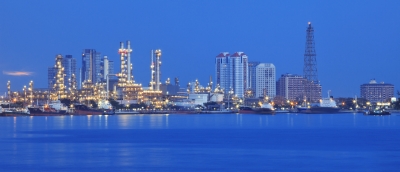During the last 10 years, the natural gas and oil industry has developed into one of America’s most technologically sophisticated industries. New advancements have caused the industry to become a technological pioneer. In the nineties, increased numbers of power generators started to utilize natural gas for electricity production, which caused demand to rise significantly. This industry has managed to keep up with rising demand and generate larger quantities of gas, thanks to technological advances. These advances have allowed gas to be produced from shale, along with other less conventional formations, which are located in plentiful supply throughout the US. However, natural gas is still produced from traditional onshore and offshore formations as well.

In the production and exploration sector, technological advancements have given the industry the necessary practices and equipment to continuously boost the production of gas, and fulfill the increased demand. This technology makes natural gas production and exploration safer, more efficient and more eco-friendly. Recently, a few of the significant technological advancements in the production and exploration sector have included coiled tubing technology, carbon dioxide sand fracturing, and 4D and 3D seismic imaging.
Coiled Tubing Technology
This technology replaces standard jointed, rigid drill pipes with lengthy, coiled, pliable pipe strings. This significantly lowers drilling costs and requires less drilling mud. Also, the rig set up is quicker, which reduces the time required to form drill pipe connections. Hence, coiled tubing creates a smaller drilling footprint. Furthermore, this engineering technology can be utilized along with slim hole drilling, to offer more efficient drilling conditions and less environmental damage.
Carbon Dioxide Sand Fracturing
Ever since the seventies, fracturing methodologies have been employed to boost flow rates of natural oil and gas from underground formations. Carbon Dioxide Sand Fracturing uses a blend of liquid carbon dioxide and sand, ceramic or other “proppants” to fracture formations. This creates and enlarges cracks that the gas and oil can pass through more easily. Then, the carbon dioxide evaporates, which leaves only sand inside the formation to hold the larger cracks open. As no additional substances are utilized in this kind of fracturing, no “leftovers” remain after fracturing which need removing. As a result, although this kind of fracturing opens the formations up and facilitates increased gas and oil recovery, it will not harm the deposit. Also, it shields groundwater resources and creates no underground waste.
4D and 3D Seismic Imaging
The introduction of 3D seismic imaging made a huge impact on natural gas exploration. The technology employs standard seismic imaging methods, in conjunction with powerful processors and computers, to produce a 3D representation of subsurface layers. The 4D technology takes this idea 1 step further, by incorporating time as a factor, enabling exploration teams to witness how subsurface attributes alter through time. Now, exploration teams can easily identify a natural gas prospect. Also, they can lessen the quantity of dry holes being drilled, position wells more efficiently, reduce exploration times and lower the cost of drilling. This produces both environmental and economic advantages.
The technological innovations described above are just a small part of the more advanced technologies being created and used in the production and exploration of oil and gas. New applications and technologies are being created all the time. These cutting edge advancements serve to make the production of gas more economical. Also, they enable deposits to be produced that were previously regarded as too costly or unconventional to develop. They ensure that gas supplies keep up with the growing demand as well. In America, there are enough natural gas resources to power the country for a very long time. Undoubtedly, technology plays a big part in offering eco-friendly, cost effective ways of accessing these resources.
See Also:
- Extreme Energy, Extreme Implications
- Is Natural Gas Cheap?
- Gasoline vs. Crude Oil Prices (Chart)
- North Dakota Jobs Booming
- Energy Inflation
- Oil Market Bottoming?
Resources:
William Stevens is a writer who creates informative articles in relation to technology.
Image courtesy of khunaspix / FreeDigitalPhotos.net




